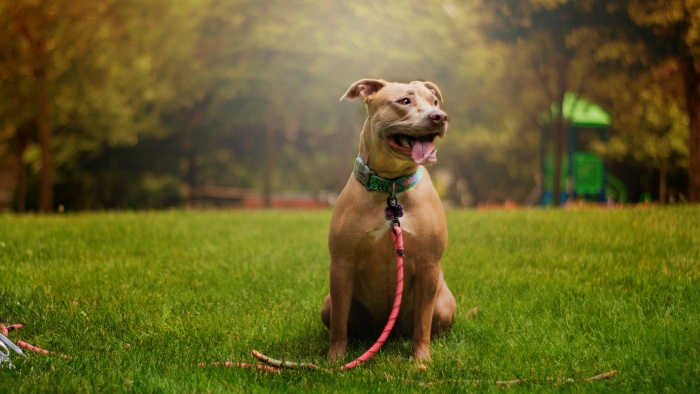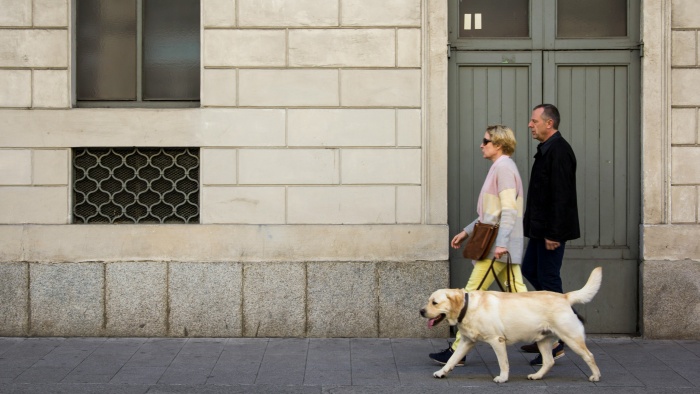Dog Doesn’t Want To Walk:What To Do

Do you find that your dog doesn’t want to walk, suddenly halting and refusing to budge on your outings? It can indeed be exasperating.
In this discussion, we delve into potential reasons behind your dog’s reluctance and offer effective strategies to encourage them to walk again.
Why your dog doesn’t want to walk & solutions
Encountering a situation where your dog suddenly refuses to walk during your stroll is not unique. This common issue can be quite baffling and challenging, particularly if the reasons or solutions are unclear. Here, we’ll explore various reasons your dog may stop walking and suggest ways to motivate them to proceed.
Joint pain in your dog
One reason dogs may cease walking is due to enduring joint pain. Conditions like arthritis or hip dysplasia can cause considerable discomfort. It’s vital to notice signs like favoring a limb or vocalizing pain before stopping.
Should you suspect joint pain, contacting a professional for an examination and treatment advice is crucial.
Possible undiagnosed injuries
Injuries, ranging from minor to severe, like a damaged paw pad or more critical issues, can cause your dog to halt suddenly.

If an injury occurs, cease your walk, inspect for wounds, and reach out to a professional for advice and potential treatment. If the injury is not apparent, professional consultation is still advised.
Fear as a factor
Fear is a common reason for a dog’s reluctance to walk, particularly in younger or trauma-affected dogs. Indicators of fear include body language changes such as ear position, tail carriage, and breathing patterns.
Identifying and addressing the fear source is essential. This might involve desensitization tactics and professional guidance for managing your dog’s anxiety.
Leash training needs
For dogs unaccustomed to leashed walks, this experience can be overwhelming. Introduce them gradually to walking equipment and progress to brief, leashed indoor walks before transitioning outdoors. Remember to choose suitable gear and reward positive behavior.

If challenges persist, professional advice can be beneficial.
Other potential causes
If the above scenarios don’t resonate, consider these additional factors:
- Your dog might be exhausted or unwell.
- Extreme weather conditions.
- Uncomfortable walking gear.
- Desire to extend the walk.
- Inadequate exercise and stimulation during walks.
- Excessively long walks for your dog’s capabilities.
Addressing these issues might involve adjusting your walking routine, reassessing the walking gear, or consulting a professional for tailored advice.
Strategies to encourage your dog to walk again
Below are some practical strategies to help your dog resume walking:
- Quickening your pace through exciting areas can minimize prolonged sniffing and exploration.
- Consistently walking your dog on the same side can help reduce pulling.
- Introduce variety in your walks by exploring new and engaging paths.
- If they fixate on an object, pause and limit their access, teaching them progress relies on walking with you.
- Focus on enhancing leash training techniques.
- Positively reinforce good walking habits.
In instances where your dog refuses to move, consulting a vet is advisable for professional guidance and a thorough check-up, as many reasons for this behavior are rooted in medical issues or emergencies.
Remember, it’s crucial to avoid bribing or forcefully dragging your dog as these actions might reinforce or exacerbate adverse behaviors. Additionally, avoid scolding or punishing your dog, as multiple factors could contribute to their reluctance to walk. In cases of uncertainty, it’s always wise to seek veterinary advice.
Maintaining positive walking habits & evaluating strategy effectiveness
Incorporating these strategies into your routine is crucial for fostering and maintaining a positive walking experience for your dog.
Regularly assessing the effectiveness of these approaches can help you determine if adjustments are needed or if further professional advice is necessary.
This ongoing evaluation ensures that your walks remain enjoyable and beneficial for both you and your dog, adapting as needed to their changing needs and behaviors.

Conclusion
In summary, when your dog doesn’t want to walk, it presents an opportunity to explore and address a variety of potential underlying issues.
From joint pain and injuries to fear and the need for leash training, understanding these factors is key to finding effective solutions.
By applying the strategies discussed, like varying walking routes and positively reinforcing good behaviors, you can work towards overcoming this challenge.
Remember, consistent evaluation and adaptation of these methods are as important as their implementation. Ultimately, the goal is to ensure a fulfilling and comfortable walking experience for both you and your dog.
FAQs
FAQ 1: How can I tell if my dog’s refusal to walk is a temporary issue or a sign of a more serious problem?
Answer: Observe if the refusal to walk is a recurring issue or linked to specific situations or environments. Temporary reluctance may happen due to minor discomforts or mood changes. However, if it’s a consistent pattern or accompanied by other symptoms like limping or behavioral changes, it might indicate a more serious issue requiring professional assessment.
FAQ 2: What are some effective ways to motivate a hesitant dog to start walking?
Answer: Besides the strategies in the main text, try engaging your dog’s curiosity with new toys or treats during the walk. Also, gradually increasing the duration and intensity of walks can help build their confidence and enthusiasm for walking.
FAQ 3: How can I ensure my dog gets enough exercise if they refuse to go on walks?
Answer: If walks aren’t feasible, consider other forms of exercise like playing fetch, using a treadmill designed for dogs, or engaging in indoor obstacle courses. These activities can provide physical exertion and mental stimulation for your dog.
FAQ 4: Can a dog’s diet affect their willingness to walk?
Answer: Yes, a dog’s diet can impact their energy levels and overall health. Ensure they’re getting a balanced diet with the necessary nutrients. If you notice a change in their walking behavior, consider if there have been any recent changes to their diet.
FAQ 5: What should I do if my dog shows signs of distress or anxiety during walks?
Answer: If your dog seems anxious, choose quieter, less crowded walking paths, and avoid situations that might trigger their fear. Gradual exposure and positive reinforcement can help. If the anxiety persists, consult a professional for behavior modification strategies or possible medical interventions.

